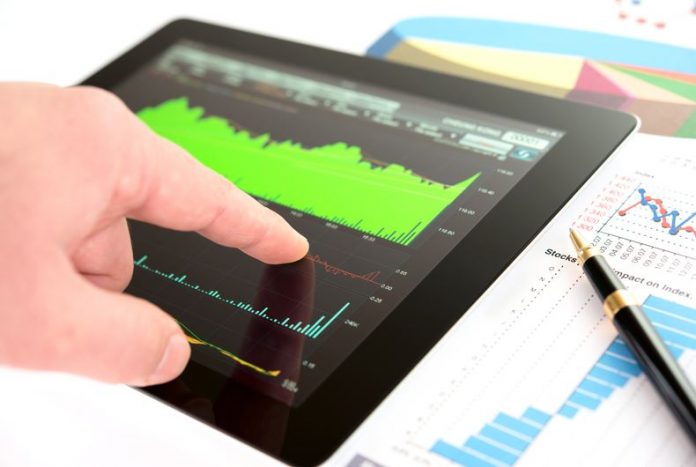The Forex market is the one concerned with the simultaneous buying of one foreign currency and the selling of another.
Forex transactions happen in pairs of currencies, with the seven major currencies- namely, British Pound, US Dollar, Japanese Yen, European Union Euro, Swiss Franc, Canadian Dollar, and Australian Dollar- having all the parts of the transactions.
Forex market is the largest financial market in the world, with an average daily turnover estimated at over 9.1 trillion USD. This is estimated to be 30 times larger than the volume of all US equity markets combined.
A small percentage of transactions on the Forex market take place through large companies and governments that buy and sell in different countries, and thus need the corresponding currency.
They exchange their own currency for another one, in the paired currency transactions of the Forex.
This however accounts for only about 5% of the daily turnover of the Forex. The remaining 95% is concerned mostly with speculation, and in other words, profit.
In this large intangible market, transactions happen over the phone, and lately more and more over Internet connections.
Money and currency change hands without even a physical exchange. Large amounts of money are thus moved with simply an electronic trace of the transaction, and no sign of the bills.
However, this does not mean that money cannot be lost or even gained off of the Forex. Indeed, most speculative transactions happen with one sight in mind: profit, since the Forex is the market which generates the biggest profit among all legal types of transactions.
The Forex market, especially the largest trading platform known as the interbank, is open only to very large companies dealing in currencies and with a well-established high net worth.
The other component allowed to deal in the interbank is governments, through the central bank mostly.
However, a secondary market of the Forex is also available for trading currencies. Companies and firms can trade in this area, and since it was open to the public in 1997, the general man too, can transaction off the Forex.
Many people have entered the Forex for the large profit it can generate. This dynamic, never static, and ever changing market is an adrenaline rush for the one who wants to trade.
People can play the floor almost like a gambling floor. This is one major mistake most laymen, and sometimes established traders too, make.
The first advice when trading off the Forex, and especially to generate good revenue and even a profit, is to know the market.
The trader has to know how to interpret the Forex charts and data, and how to gather the information necessary for his transactions.
Improper knowledge can lead the trader to impulsive and rash gambling, which most of the time will imply losses and no profit. Proper training is thus one of the first tips to succeed in this cut-throat world.
Investing in liquid currencies is also more advice that is given to newcomers. This is considered as a safe bet among traders.
Investing in the most liquid currency might not mean great risk and increasing profit, but it might be a very good way of cutting losses, and even earning some profit, as compared to full-blown losses.
Risk management is thus another aspect of earning profit off of Forex trading. Risky deals can bring big profits, but it will depend much on the traders cool, and him knowing how to apply his strategies.
Trading strategies are other tools which can help to achieve a profit off the Forex. Applying fundamental analysis to trading methods is what this stands for, and there are 3 aspects which need to be taken into consideration: the chart setup, the entry point, and the exit point.
The chart setup is the basis of all trading strategies. It provides vital information such as the indicators the strategy uses and their settings, the time frame of the chart to use, and the currencies the strategy works with.
These are the three basics with which the trader can work with, even though there are some other strategies having more extensive details than this one.
The entry point is the next on the list, that is, knowing when youll be a winner when entering at what precise stage of the market.
Simple strategies need as little as two indicators to predict this, but complex strategies, pertaining to some complex currency settings, need more conditions for accuracy.
The exiting strategy consists of when to exit the market and make the most profit.
Concepts such as money management enter this aspect, and a good exit strategy has two important aspects, namely the stop loss level: when to exit the trade with a minimum loss, and the take profit level- when to exit the trade with the maximum profit the transaction can make.
Close conditions, with a preset set of parameters, is another strategy used for a good exit point. All these strategies can imply making a profit off of Forex trading.
The leverage is another aspect of Forex transactions that can magnify a profit. The leverage is the ability to control a large amount of one currency using a very small amount of its percentage.
This is also known as a security deposit when opening a Forex account. They thus allow customers to control transactions with a value many times larger than the funds in their account.
The amount of leverage in a transaction can imply more profit, or less. With a small leverage, the trader can control more funds, and thus earn more.
A large leverage however, will imply not earning much in the ratio, since the percentage of the deposit is a consequent amount of the funds.

